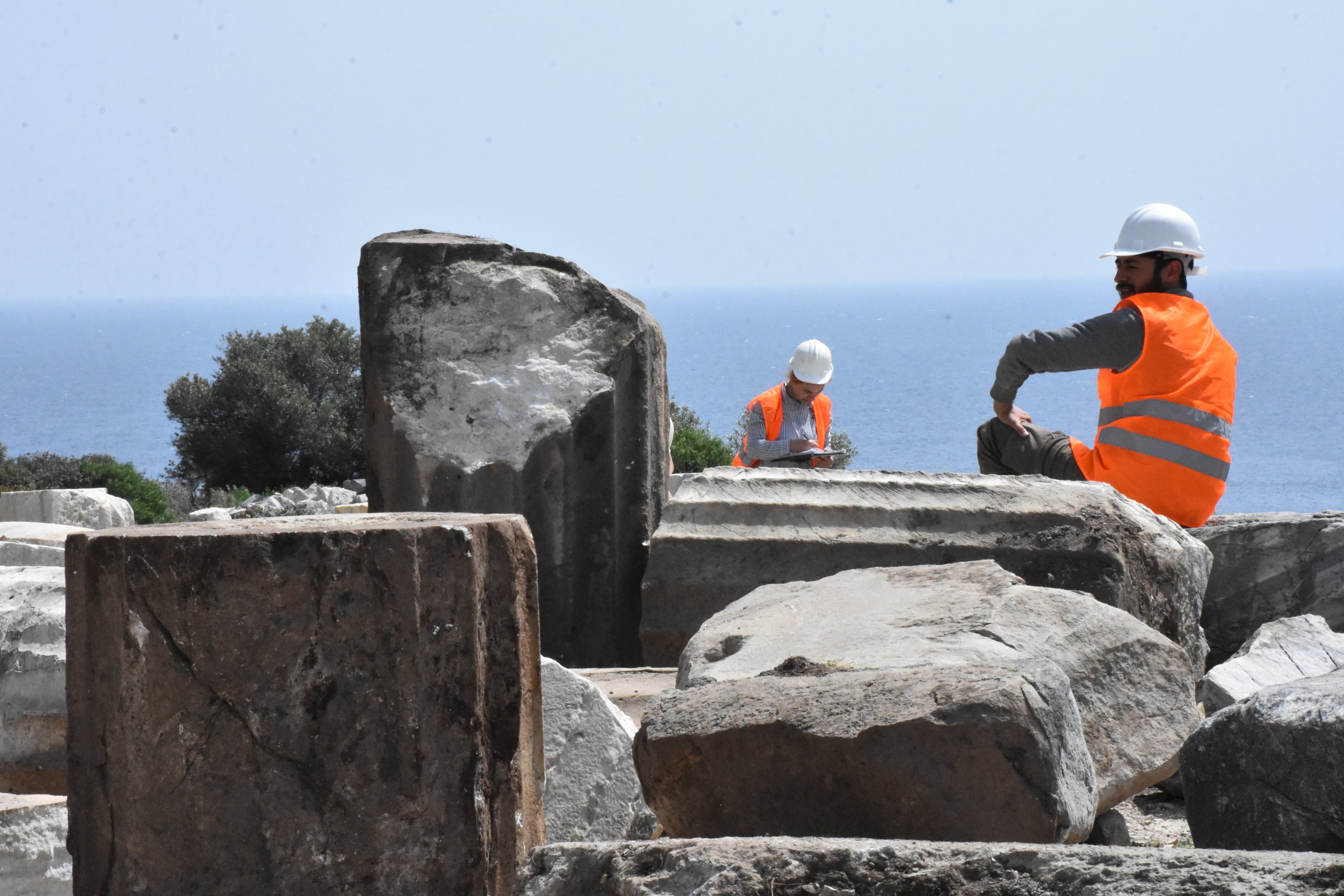© Turkuvaz Haberleşme ve Yayıncılık 2024
The ancient city of Knidos, a site that harbors around 3,000 years of history in the Aegean province of Muğla province, unveiled new epigraphs on Tuesday. Inscriptions provide important data about the Islamic conquests in Western Anatolia and the history of the region.
The epigraphs made of marble and limestone belonging to the Umayyad period were unearthed last week. A total of 27 epigraphs have been found so far.

Excavations will continue throughout the year in Knidos, which is rumored to have witnessed the life of the astronomer and mathematician Eudoxus, the doctor Euryphon, the painter Polygnotos and the architect of the Lighthouse of Alexandria, Sostratos.
Excavation director Ertekin Doksanaltı told Anadolu Agency (AA) that the research in the ancient city was being carried out with the support of many parties such as the General Directorate of Cultural Heritage and Museums, Selçuk University, the Turkish Historical Society, the Governorship of Muğla and the South Aegean Development Agency.

"The excavations will continue at the Corinth Monument, the gate of Propylon monumental, the stairs and the theater," Doksanaltı said.
"After the Corinthian Monument and the 'D Church' excavations, new epigraphs began to emerge with Arabic inscriptions and graffiti belonging to the Umayyad period," he added.

"These inscriptions provide very important data, especially in terms of the early Islamic conquests. The epigraphs also depict the Islamic armies departing from Palestine and Lebanon and the soldiers, their commanders participating in these conquests," Doksanaltı said.
Emphasizing that when the Umayyads came to Kinidos, they realized that the city had left its days of glory behind and was emptying gradually, Doksanaltı said that the Arabs settled around the building, which is considered the largest church in the city. According to the archeological data, Umayyads stayed in Knidos for about 30 years.

"Knidos is the gateway and entrance to the Aegean Sea. Especially by keeping the Kos-Rhodes-Knidos triangle, it was aimed to intercept the Byzantine navy and protect support ships from the Aegean during the conquest campaigns to Istanbul. It ensured that the Byzantine navy would have encountered an obstacle while entering here," he said.
Knidos seems to be full of surprises and new discoveries are yet to be revealed in the following days.
